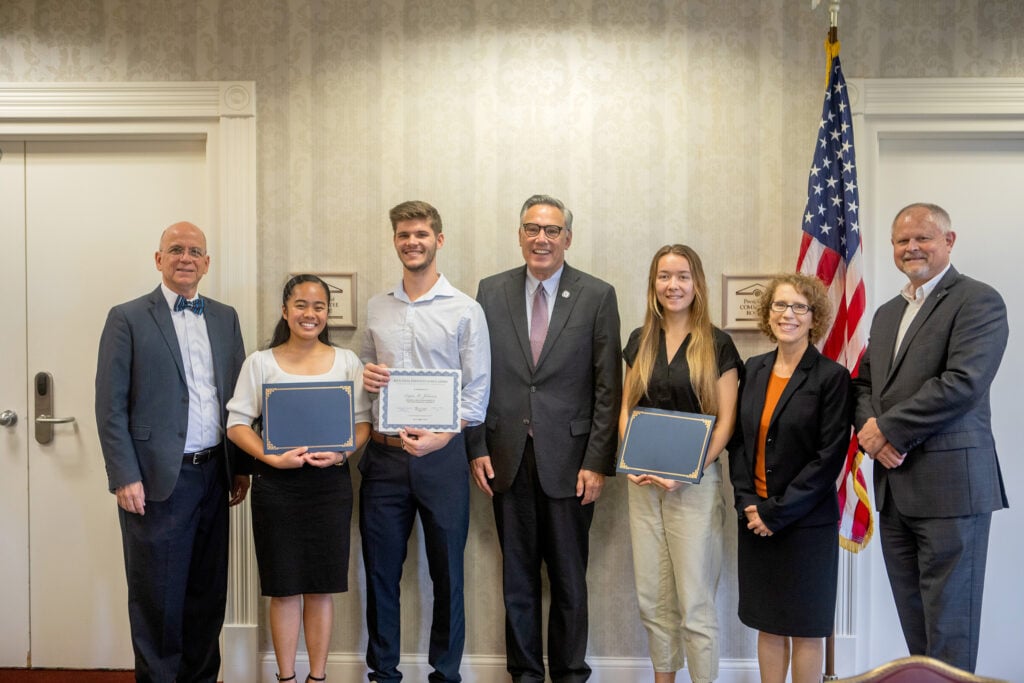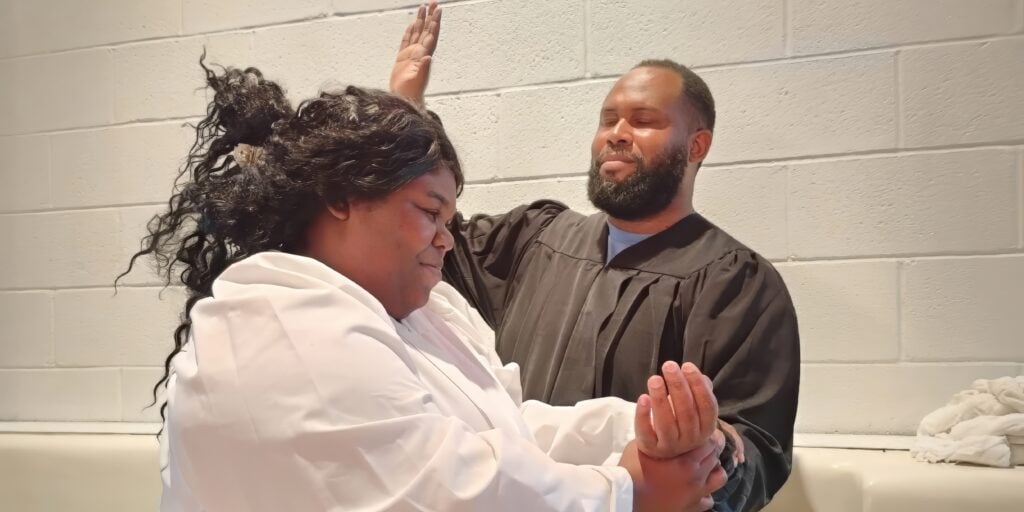According to the World Health Organization, the United States has 63,570 confirmed cases of COVID-19 disease as of March 26, 2020. Canada has 3,409, Bermuda has seven, and Guam has 37.* I can only imagine the turmoil in the lives of those who have been affected directly because they or a family member are or have been sick. And it is concerning to know that all of us are at risk.
This hit home when I was under voluntary quarantine after returning from a conference (prior to the current travel restrictions). My self-imposed restrictions came after learning that another attendee of the same event was being tested for the novel coronavirus disease, now called SARS-CoV-2. I did not have symptoms of COVID-19, and praise God the test result was negative, but it was a trying time for many.
What was it like being under quarantine? And looking back, can I say it was necessary? What about social distancing? What’s so important about it?
These are important questions to ask, especially since fewer adults living in the United States are concerned about the COVID-19 disease compared to a few weeks ago. And even in the midst of strong government-mandated closings and restrictions, large crowds continue to gather.
The Novel Coronavirus
Let’s look at what we currently know about the novel coronavirus so we can understand why it is of such great concern. First of all, it is termed “novel” because it was only recently discovered. Prior to December 2019, we did not know this virus existed.
But we have had some experience with some of its relatives. The SARS-CoV virus, which caused the outbreak of Severe Acute Respiratory Syndrome (SARS) in 2002-2003, comes from the same family of viruses. This family also includes MERS-CoV, which lead to an outbreak of the Middle East Respiratory Syndrome (MERS) in 2012. Both of these viruses led to many deaths, but not to the same worldwide extent as the current SARS-CoV-2.
SARS-CoV-2 is an RNA virus that has the ability to replicate, or multiply, inside the human body. The virus will actually hijack the activity that happens within the cells of our bodies so that more viruses are made by those cells. We can then become a carrier of the virus with the potential of infecting other people.
When Sharing Is Not Caring
Experts believe the SARS-CoV-2 virus is spread from one person to another mainly through droplets from sneezing or coughing. It’s also possible to get it from contaminated surfaces and objects such as doorknobs, tabletops, etc. The virus is most often spread when the infected person is showing symptoms (fever, cough, shortness of breath), which is why people with even mild symptoms are asked to self-quarantine. The more severe the symptoms, the more likely you are to spread the virus.
This puts health workers at particular risk since they are physically in contact with the most serious and critically ill. Hospitals can become overwhelmed if a large number of individuals require critical care and also if they lose workers who contract the disease while caring for their patients.
We also know that some people are more likely to have severe COVID-19 disease requiring hospitalization and intensive care. According to the U.S. Centers for Disease Control and Prevention (CDC), we are most concerned about “older adults and people of any age who have serious underlying medical conditions.” These medical conditions include chronic lung disease such as asthma, serious heart conditions, cancer, severe obesity, diabetes, kidney disease, and liver disease. Note that even younger adults can become seriously ill. In fact, 20 percent of patients who require hospitalization were aged 20-44 years.
With more than 20,000 deaths so far, it is not a disease to ignore or take lightly.

The Unknown
The SARS-CoV-2 virus was discovered just under three months ago yet it has spread like wildfire around the globe. Many are racing to develop medications to help the sick or vaccines to protect others from getting sick. Although some are possibly helpful, none have yet successfully passed the rigorous trials that precede approval by the U.S. Food and Drug Administration.
In this current context, the only known ways to slow or prevent spread of the disease is by practicing good hygiene (regular hand washing with soap or using sanitizer, covering coughs and sneezes, cleaning and disinfecting surfaces), by avoiding close contact with those who are sick, and maintaining social distancing when the virus is present in your community. The last method seems to have been useful during the 1918 flu pandemic. Although there are claims that certain products boost the immune system and thereby prevent COVID-19, there is not enough scientific evidence to verify their use or safety. And quite frankly, there is still so much that we don’t understand about the virus itself.
We won’t know the outcome anytime soon as COVID-19 numbers continue to multiply. Some are ill and struggling to recover from this disease. Some have lost family members. Many have lost jobs, or will soon. There is much uncertainly.
Sheltered in Place
I return now to my personal experience in being self-quarantined. Those days while we waited to learn if the other person was positive or negative were very trying. My mind jumped back and forth between concern for my own health and fear for those who I could put at risk if I ignored this precaution. And in reviewing all the data and experiences in other countries that did very little social distancing, or started it too late, I felt it was only right to do my part to protect my friends, neighbors, coworkers, church members, and family. Even though it was low risk that I had been infected, I stayed away from others.
My situation is admittedly better than what many others may have to face. I’ve had the opportunity to share a home-office space with my husband since both our employers instituted a temporary work-from-home policy. We’ve even been able to enjoy afternoon walks on sunny days. But some of my most meaningful experiences have been in gaining spiritual lessons from this situation.
In Acts 2:42-47 we are given a glimpse of a church that shared everything together — from food and resources to prayers and Bible study. And I’ve had to wonder, how can that be done in today’s context? They met daily for fellowship. No doubt social distancing was not part of the formula at that time. I then realized that this picture of peace and harmony came after the Holy Spirit was poured out on the young church. And that was preceded by days of earnest prayer and confession.
Although our current situation is different, and we are not able to meet in one physical location, we have technology that allows us to connect from around the world. Surely the Holy Spirit has the power to bring us together even in these times!
Ellen G. white writes that, “With the consecrated worker for God, in whatever place he may be, the Holy Spirit abides” (The Acts of the Apostles, p. 51).
All of this makes me wonder, what does God want me to get out of this situation? For one, I have time to deepen my bond with my husband during our first year of marriage instead of spending much of it traveling. And perhaps now is my opportunity to pray more, study more, fellowship more (using technology), and prepare for new ways of ministry. Maybe this is the time to really invest in the 100 Days of Prayer starting on March 27.
Certainly, it can be easy is misunderstand spiritual things in times of a health crisis, and vice versa. But I’m even more certain is that God is working something good out of a horrible situation. Until He reveals the plan, I find comfort and purpose in the Psalmist’s words: “e merciful to me, O God, be merciful to me! For my soul trusts in You; And in the shadow of Your wings I will make my refuge, Until these calamities have passed by. … I will praise You, O Lord, among the peoples; I will sing to You among the nations” (Ps. 57:1, 9, NKJV).
* UPDATE: These numbers continue to change rapidly. As of March 31, 2020, the WHO is reporting 140,640 confirmed cases of COVID-19 disease in the U.S. while Canada has 6,317, Bermuda has 22, and Guam has 58.
— Angeline D. Brauer, DrPH, MHS, RDN, is director of Health Ministries for the North American Division.




